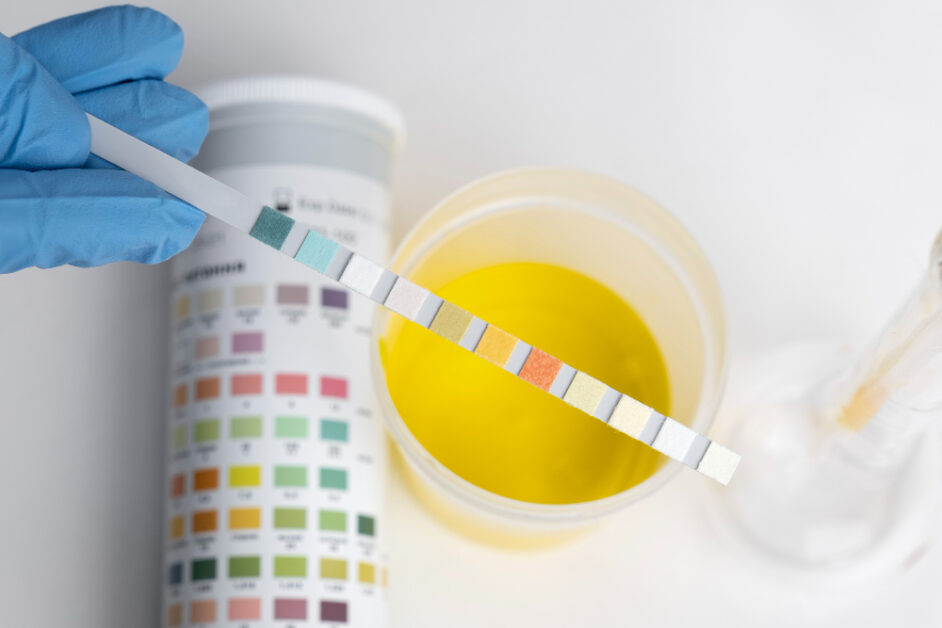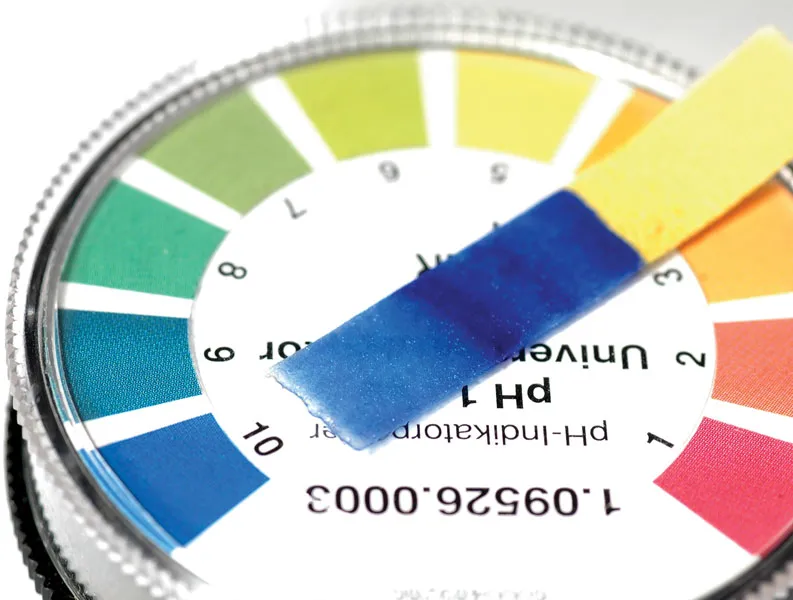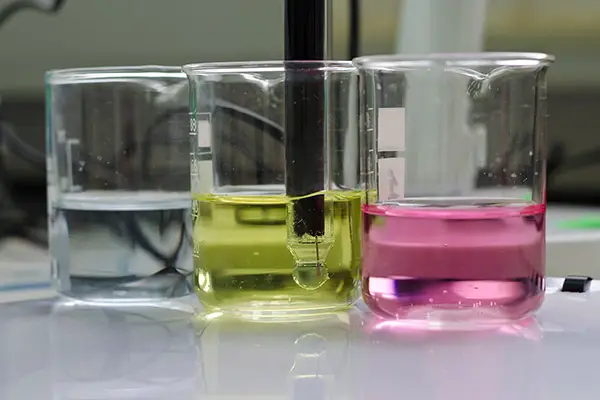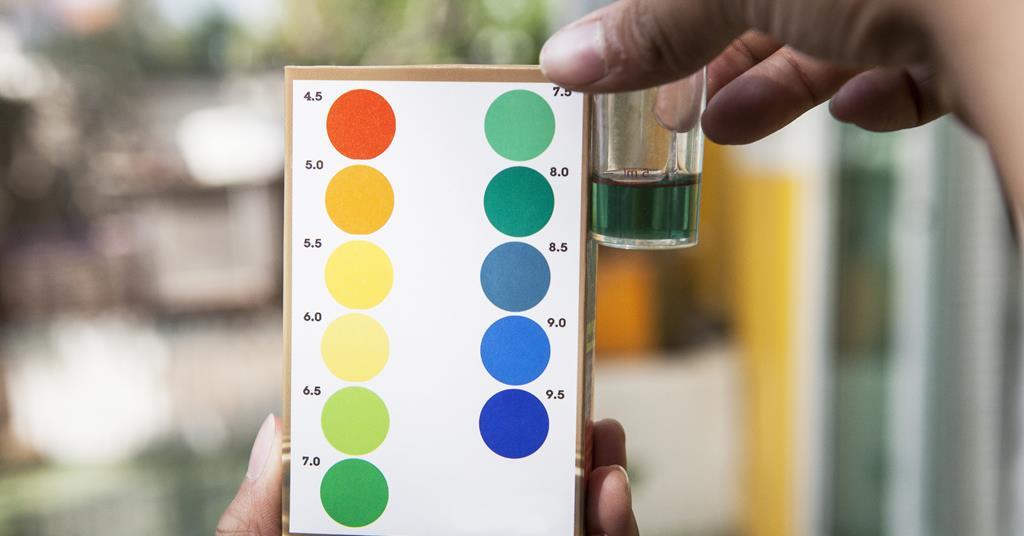Why Your pH Meter is Giving Incorrect Readings and How to Troubleshoot It
Understanding pH Meter Accuracy
pH meter accuracy is essential for obtaining reliable and precise measurements in a wide range of applications, including laboratory experiments, industrial processes, and environmental monitoring. Understanding the factors that affect pH meter accuracy is crucial in order to ensure accurate and meaningful results.
One important factor to consider is the quality and condition of the electrode. Over time, the electrode can become contaminated or worn out, leading to inaccurate readings. Regularly checking the condition of the electrode, cleaning it properly, and storing it correctly are necessary steps to maintain accuracy. Additionally, the response time and temperature compensation of the electrode should be taken into account, as these factors can impact measurement accuracy.
• Regularly check the condition of the electrode
• Clean the electrode properly to prevent contamination
• Store the electrode correctly to maintain accuracy
• Consider the response time and temperature compensation of the electrode
Factors Affecting pH Meter Readings
Factors Affecting pH Meter Readings are crucial to understand for accurate measurements. One major factor is temperature. pH meters are sensitive to temperature changes, and deviations from the calibrated temperature can significantly affect the accuracy of the readings. To minimize this error, it is essential to use a pH meter with temperature compensation or manually adjust the readings based on the temperature coefficient.
Another factor to consider is electrode condition. The condition of the pH electrode plays a vital role in obtaining accurate measurements. Over time, the electrode can become contaminated, leading to inaccurate readings. Regularly checking and cleaning the electrode is crucial to maintain its accuracy. Additionally, storing the electrode properly and replacing it when necessary will ensure reliable results. By addressing these factors, gardeners and hydroponics enthusiasts can ensure precise pH measurements, allowing them to make informed decisions for their plants’ optimal growth.
• Temperature: pH meters are sensitive to temperature changes, and deviations from the calibrated temperature can significantly affect accuracy.
• Use a pH meter with temperature compensation or manually adjust readings based on the temperature coefficient.
• Electrode condition: The condition of the pH electrode is crucial for accurate measurements.
• Regularly check and clean the electrode to prevent contamination and maintain accuracy.
• Store the electrode properly and replace it when necessary for reliable results.
• Precise pH measurements are essential for informed decisions regarding optimal plant growth.
Calibration: The Key to Accurate Measurements
Calibration is an essential process when it comes to achieving accurate measurements with a pH meter. By calibrating your meter, you are ensuring that it is providing precise and reliable readings, which is crucial for any scientific or industrial application. During calibration, the pH meter is adjusted based on known reference values, typically using buffer solutions with known pH values. This allows the meter to accurately measure the pH of unknown samples by comparing its readings to the reference values.
Proper calibration is the key to obtaining accurate measurements because pH meter readings can drift over time due to various factors, such as electrode wear, temperature changes, or contamination. Regular calibration helps to correct for such drifts and ensures that the meter remains accurate and reliable. It is recommended to calibrate the pH meter before each use or at regular intervals, depending on the specific requirements of your application. Following the manufacturer’s instructions and using fresh, high-quality buffer solutions are important factors in achieving reliable calibration results. Remember, accurate measurements start with proper calibration.
• Calibration is crucial for achieving accurate measurements with a pH meter.
• It involves adjusting the meter based on known reference values using buffer solutions.
• Regular calibration corrects for drifts caused by factors like electrode wear or temperature changes.
• Calibrating before each use or at regular intervals ensures accuracy and reliability.
• Following manufacturer’s instructions and using fresh, high-quality buffer solutions are important.
Importance of Proper Maintenance
Proper maintenance of pH meters is essential for accurate and reliable measurements. Neglecting regular maintenance can lead to significant inaccuracies in readings and the deterioration of the overall performance of the pH meter. Maintaining the pH meter in optimal condition ensures the longevity of the instrument and guarantees precise and consistent results, which is crucial for any gardening enthusiast or professional in the field.
Regular cleaning is a fundamental aspect of pH meter maintenance. Over time, the electrode can accumulate deposits from samples or contaminants from the environment, which can affect its sensitivity and response time. By adhering to the manufacturer’s guidelines for cleaning and storage procedures, users can prevent electrode deterioration and ensure optimal performance. Remember, a clean electrode is a responsive electrode. Additionally, checking the condition of the pH electrode on a regular basis is essential. Any damage or wear and tear can interfere with accurate readings and compromise the overall performance of the pH meter. A thorough inspection of the electrode for cracks, scratches, or any signs of deterioration is recommended. If any issues are identified, prompt replacement or repair is necessary to maintain the integrity of the pH meter.

By prioritizing proper maintenance, gardening enthusiasts can rely on their pH meters to provide accurate readings and achieve optimal plant growth. Neglecting this important aspect can lead to skewed data, ineffective treatments, and unsuccessful cultivation efforts. So, be sure to allocate time and resources to maintain and care for your pH meter properly. Your plants will thank you for it!
• Regular maintenance of pH meters is crucial for accurate and reliable measurements.
• Neglecting maintenance can result in significant inaccuracies in readings and deterioration of overall performance.
• Proper maintenance ensures the longevity of the instrument and guarantees precise and consistent results.
• Regular cleaning is essential to prevent electrode deterioration caused by sample deposits or environmental contaminants.
• Adhering to manufacturer’s guidelines for cleaning and storage procedures helps maintain optimal performance.
• Checking the condition of the pH electrode regularly is necessary to identify any damage or wear that may affect accuracy.
• Prompt replacement or repair should be done if any issues are identified with the electrode.
• Prioritizing proper maintenance allows gardening enthusiasts to rely on their pH meters for accurate readings and optimal plant growth.
• Neglecting maintenance can lead to skewed data, ineffective treatments, and unsuccessful cultivation efforts.
• Allocating time and resources for proper care will benefit both the pH meter’s integrity and plant health.
Checking Electrode Condition
To ensure accurate pH measurements, it is crucial to regularly check the condition of the electrode. The electrode serves as the key component in pH meters, as it is responsible for detecting and measuring the hydrogen ion concentration in a solution. Over time, the electrode can become dirty or damaged, compromising its performance and leading to erroneous readings.
One way to assess the electrode condition is by visually inspecting it for any signs of wear or damage. Look for cracks, chips, or loose wires that may indicate a need for replacement. Additionally, check the electrode’s glass membrane for any signs of discoloration or buildup, as this can affect its sensitivity and responsiveness.
Furthermore, it is essential to perform a calibration check on the electrode. Calibration ensures that the electrode’s response is accurate and reliable. By immersing the electrode in a pH buffer solution of a known value and comparing the meter’s reading to the expected value, you can verify if the electrode is properly calibrated. If discrepancies are detected, recalibration may be necessary to restore accuracy. Remember, an electrode that is not calibrated correctly can lead to significant errors in subsequent measurements. Regularly checking the condition of the electrode and recalibrating it as needed will help maintain precise and dependable pH measurements.
• Visually inspect the electrode for signs of wear or damage such as cracks, chips, or loose wires.
• Check the glass membrane of the electrode for discoloration or buildup which can affect sensitivity and responsiveness.
• Perform a calibration check by immersing the electrode in a pH buffer solution of known value and comparing the meter’s reading to the expected value.
• Recalibrate if discrepancies are detected to restore accuracy.
• Regularly check the condition of the electrode and recalibrate as needed to maintain precise and dependable pH measurements.
Cleaning and Storage Procedures
Proper cleaning and storage procedures are essential for maintaining the accuracy and longevity of your pH meter. After each use, it is important to thoroughly clean the electrode to remove any residues or contaminants that may affect future readings. Start by rinsing the electrode with distilled water to remove any sample residue. Gently wipe the electrode with a soft cloth or tissue to ensure it is completely clean. Avoid using abrasive materials or harsh chemicals, as these can damage the electrode.
Once the electrode is clean, it is crucial to store it properly. Always store the electrode in a storage solution provided by the manufacturer or in a pH 4 buffer solution. This will help maintain the hydration and sensitivity of the electrode. Additionally, ensure that the storage solution covers the entire electrode to prevent it from drying out. Store the electrode in a cool, dry place away from direct sunlight and extreme temperatures. Remember to regularly check the storage solution and replace it if it becomes discolored or contaminated. By following these cleaning and storage procedures, you can ensure the accuracy and reliability of your pH meter for extended periods of time.
• Thoroughly clean the electrode after each use to remove residues or contaminants.
• Rinse the electrode with distilled water to remove sample residue.
• Gently wipe the electrode with a soft cloth or tissue for complete cleanliness.
• Avoid using abrasive materials or harsh chemicals that may damage the electrode.
• Store the electrode in a storage solution provided by the manufacturer or pH 4 buffer solution.
• Proper storage maintains hydration and sensitivity of the electrode.
• Ensure that the storage solution covers the entire electrode to prevent drying out.
• Store in a cool, dry place away from direct sunlight and extreme temperatures.
By following these cleaning and storage procedures, you can ensure:
– Accuracy of your pH meter readings
– Longevity of your pH meter’s lifespan.
Electrode Response Time and Temperature Compensation
Electrode Response Time is a critical factor to consider when using a pH meter for accurate measurements. This refers to the time it takes for the electrode to stabilize and provide a reliable reading after it comes into contact with a sample. It is important to allow sufficient time for the electrode to settle and reach equilibrium. If readings are taken too quickly, there is a risk of obtaining inaccurate or unstable data.
Temperature Compensation is another crucial aspect to take into account for precise pH measurements. pH values are temperature-dependent, meaning that variations in temperature can affect the accuracy of readings. pH meters with temperature compensation functionality can automatically adjust pH measurements to correct for temperature differences. This ensures that pH values remain consistent and reliable, even when working with samples at different temperatures.
By considering both electrode response time and temperature compensation, accurate and reliable pH measurements can be achieved. Proper understanding and implementation of these factors are essential for obtaining precise data in various applications such as laboratories, hydroponics, and water quality analysis. So, it is crucial to take the necessary time for electrode stabilization and utilize temperature compensation capabilities to minimize measurement errors and ensure the accuracy of pH readings.
• Electrode Response Time is the time it takes for the electrode to stabilize and provide a reliable reading after contact with a sample.
• Allowing sufficient time for the electrode to settle and reach equilibrium is important for accurate measurements.
• Taking readings too quickly can result in inaccurate or unstable data.
• Temperature Compensation is crucial for precise pH measurements as pH values are temperature-dependent.
• Variations in temperature can affect the accuracy of pH readings.
• pH meters with temperature compensation functionality automatically adjust pH measurements to correct for temperature differences.
• This ensures consistent and reliable pH values, even when working with samples at different temperatures.
• Considering both electrode response time and temperature compensation leads to accurate and reliable pH measurements.
• Understanding and implementing these factors are essential in various applications such as laboratories, hydroponics, and water quality analysis.
• Proper electrode stabilization time should be taken into account, along with utilizing temperature compensation capabilities.
• These measures help minimize measurement errors and ensure the accuracy of pH readings.
Using Fresh Buffer Solutions
Using fresh buffer solutions is crucial for accurate pH measurements. Buffer solutions are specifically designed to maintain a known pH value and are used to calibrate pH meters. Over time, these solutions may become contaminated or lose their effectiveness, resulting in inaccurate readings.
Regularly replacing buffer solutions is essential to ensure the pH meter’s accuracy and reliability. Fresh solutions provide a known reference point for calibration, allowing for precise measurements of the pH of various solutions. By using fresh buffer solutions, gardeners can confidently monitor the acidity or alkalinity of their soil or hydroponic nutrient solutions, enabling them to make informed decisions regarding plant nutrition and health.
It is recommended to follow the manufacturer’s instructions for buffer solution expiration dates and storage conditions. Keeping buffer solutions properly stored in sealed containers will prevent contamination and ensure their longevity. By implementing this simple practice, gardeners can maintain the accuracy of their pH measurements, leading to more successful gardening experiences.
• Using fresh buffer solutions is crucial for accurate pH measurements.
• Buffer solutions are designed to maintain a known pH value and calibrate pH meters.
• Over time, buffer solutions may become contaminated or lose their effectiveness, resulting in inaccurate readings.
• Regularly replacing buffer solutions is essential to ensure the accuracy and reliability of pH meters.
• Fresh solutions provide a known reference point for calibration, allowing for precise measurements of the pH of various solutions.
• Gardeners can confidently monitor soil acidity or alkalinity by using fresh buffer solutions, enabling them to make informed decisions regarding plant nutrition and health.
• It is recommended to follow the manufacturer’s instructions for buffer solution expiration dates and storage conditions.
• Keeping buffer solutions properly stored in sealed containers will prevent contamination and ensure their longevity.
• By implementing this simple practice, gardeners can maintain the accuracy of their pH measurements.
Here is a table that summarizes the information given below:
| Point | Description |
|---|---|
| 1 | Using fresh buffer solutions is crucial for accurate pH measurements. |
| 2 | Buffer solutions are designed to maintain a known pH value and calibrate pH meters. |
| 3 | Over time, buffer solutions may become contaminated or lose their effectiveness, resulting in inaccurate readings. |
| 4 | Regularly replacing buffer solutions is essential to ensure the accuracy and reliability of pH meters. |
| 5 | Fresh solutions provide a known reference point for calibration, allowing for precise measurements of the pH of various solutions. |
| 6 | Gardeners can confidently monitor soil acidity or alkalinity by using fresh buffer solutions, enabling them to make informed decisions regarding plant nutrition and health. |
| 7 | It is recommended to follow the manufacturer’s instructions for buffer solution expiration dates and storage conditions. |
| 8 | Keeping buffer solutions properly stored in sealed containers will prevent contamination and ensure their longevity. By implementing this simple practice, gardeners can maintain the accuracy of their pH measurements, leading to more successful gardening experiences. |
Avoiding Contamination and Cross-Contamination
Contamination and cross-contamination are two common issues that can affect the accuracy and reliability of pH meter readings. To ensure accurate measurements, it is important to implement proper practices to avoid these problems.
One effective way to prevent contamination is by thoroughly cleaning and rinsing the electrode before each use. This removes any residual substances that could potentially skew the pH readings. It is also essential to use fresh buffer solutions for calibration, as using contaminated or expired solutions can introduce inaccuracies.

Cross-contamination, on the other hand, occurs when different samples come into contact with each other, leading to inaccurate readings. To prevent this, it is crucial to thoroughly clean the electrode between measurements or use separate electrodes for each sample. Proper cleaning procedures, such as rinsing with distilled water and wiping with a lint-free cloth, should be followed to ensure the absence of any residues between samples.
By following these practices and maintaining a high level of cleanliness, you can minimize the risk of contamination and cross-contamination, thus ensuring accurate and reliable pH measurements for your gardening needs.
• Thoroughly clean and rinse the electrode before each use to remove any residual substances
• Use fresh buffer solutions for calibration to avoid using contaminated or expired solutions
• Clean the electrode between measurements or use separate electrodes for each sample to prevent cross-contamination
• Follow proper cleaning procedures, such as rinsing with distilled water and wiping with a lint-free cloth, to ensure no residues are present between samples.
Troubleshooting Drift or Inconsistent Readings
Troubleshooting drift or inconsistent readings on a pH meter is crucial for obtaining accurate and reliable results. Drift typically refers to a gradual shift in pH readings over time, while inconsistent readings may vary widely from one measurement to another. Both situations can lead to inaccurate data and hinder proper analysis.
One common cause of drift or inconsistency is electrode contamination. Over time, the electrode can accumulate debris, residue, or deposits, affecting its performance. Regular cleaning and maintenance are essential to prevent such issues. Ensure that you follow the appropriate cleaning and storage procedures recommended by the manufacturer to maintain the electrode’s integrity.
Another factor to consider is electrode response time and temperature compensation. pH meters rely on a stable response from the electrode, and any delay or inconsistency can lead to inaccurate readings. Ensure that the electrode has sufficient time to stabilize before taking a measurement. Additionally, temperature plays a significant role in pH readings, as the pH of a solution can vary with temperature. Most pH meters offer temperature compensation features to adjust the readings accordingly, so make sure to check if the meter is properly calibrated.
• Regularly clean and maintain the electrode to prevent contamination
• Follow the manufacturer’s recommended cleaning and storage procedures
• Allow sufficient time for the electrode to stabilize before taking a measurement
• Check if the pH meter has temperature compensation features
• Ensure that the meter is properly calibrated
Addressing Electrical Interference Issues
Electrical interference is a common challenge when using pH meters, but with the right approach, it can be effectively addressed. One of the first steps in mitigating electrical interference is ensuring proper grounding of the pH meter and its components. This involves connecting the meter to a reliable electrical ground to minimize the risk of external electrical signals interfering with the pH measurement.
Additionally, shielding the pH meter and its cables from potential sources of electromagnetic interference can further enhance accuracy. This can be accomplished by using shielded cables and placing the pH meter away from power lines, motors, or other electrical equipment that may emit electromagnetic radiation. Creating a dedicated space or installing a shielded enclosure for the pH meter can also provide an extra layer of protection against electrical interference.

By implementing these measures, you can significantly reduce the impact of electrical interference on pH measurements. However, it is important to note that in some cases, despite taking all precautionary measures, electrical interference may still occur. In such instances, seeking professional assistance from a qualified technician or contacting the manufacturer for specific guidance can help address persistent issues and ensure the accurate functioning of your pH meter.
• Proper grounding of the pH meter and its components is essential to minimize electrical interference.
• Connect the meter to a reliable electrical ground to reduce the risk of external electrical signals interfering with pH measurements.
• Shielding the pH meter and its cables from potential sources of electromagnetic interference can enhance accuracy.
• Use shielded cables and keep the pH meter away from power lines, motors, or other electrical equipment that may emit electromagnetic radiation.
• Creating a dedicated space or installing a shielded enclosure for the pH meter provides an extra layer of protection against electrical interference.
• Despite taking precautionary measures, there may still be instances where electrical interference occurs. Seek professional assistance or contact the manufacturer for specific guidance in such cases.
Dealing with pH Meter Error Codes
When using a pH meter, it is not uncommon to encounter error codes, which can indicate a variety of issues. These error codes are designed to help troubleshoot and resolve problems with the meter, ensuring accurate and reliable readings. It is important to address these error codes promptly to prevent any detrimental effects on your pH measurements.
One of the most common error codes that you may come across is “ERR CAL.” This error code typically indicates that the meter requires calibration. It is essential to follow the manufacturer’s instructions for calibration, as this process establishes a reference point for accurate readings. Regular calibration ensures that the meter is properly calibrated to the specific buffer solutions used for pH measurements. Ignoring this error code or neglecting calibration can result in inaccurate readings and potentially lead to erroneous conclusions about the pH conditions of your samples.
Another common error code is “ERR SLOPE,” which suggests an issue with the electrode slope. The electrode slope represents the sensitivity of the pH electrode and its ability to measure pH accurately. When encountering this error code, it is crucial to check the electrode and ensure that it is in good condition. Damaged or worn out electrodes can contribute to this error. Cleaning and properly maintaining the electrode can help improve its slope and resolve this error. Additionally, it is necessary to replace electrodes at regular intervals as recommended by the manufacturer to maintain accuracy in your pH measurements.
By understanding and addressing pH meter error codes promptly, you can maintain the accuracy and reliability of your pH measurements. Remember to consult the meter’s user manual or contact the manufacturer for specific guidance on resolving any error codes you encounter.
• “ERR CAL” is a common error code that indicates the need for calibration.
• Regular calibration ensures accurate readings by establishing a reference point.
• Neglecting calibration can lead to inaccurate readings and erroneous conclusions.
• “ERR SLOPE” suggests an issue with the electrode slope, affecting pH accuracy.
• Checking and maintaining the electrode’s condition can help resolve this error.
• Proper cleaning and replacement of electrodes are necessary for accurate measurements.
To know more about incorrect pH reading and how to deal with it watch the video.
Verifying Sample Homogeneity
When conducting pH measurements, it is crucial to ensure that the sample being tested is homogeneous. Sample homogeneity refers to the uniform distribution of substances within the sample, which is essential for obtaining accurate and reliable pH readings.
To verify sample homogeneity, there are a few steps you can take. Firstly, it is recommended to gently agitate or stir the sample to ensure the uniform mixing of any components. This can be done using a stirring rod or by swirling the container gently. By doing so, you can minimize any concentration gradients that may affect the pH reading.
Additionally, it is advisable to take multiple measurements from different areas within the sample to further ensure homogeneity. This helps to account for any localized variations that may exist. If significant differences are observed between measurements, it could indicate an issue with sample homogeneity, and further steps should be taken to ensure accurate results.
By taking these precautions and verifying sample homogeneity, you can enhance the accuracy of your pH measurements and obtain reliable data for your analysis or experimentation.
• Gently agitate or stir the sample to ensure uniform mixing of components
• Use a stirring rod or swirl the container gently to minimize concentration gradients
• Take multiple measurements from different areas within the sample to account for localized variations
• Significant differences between measurements may indicate an issue with sample homogeneity
• Further steps should be taken to ensure accurate results if significant differences are observed
Correcting for Temperature Variations
Temperature can have a significant impact on pH measurements, and it is crucial to correct for temperature variations to obtain accurate results. As temperature increases, the pH values tend to decrease, while at lower temperatures, the pH values tend to increase. This relationship is due to the fact that temperature affects the rate at which chemical reactions occur, including those involving the dissociation of water and acid-base reactions.
To correct for temperature variations, pH meters are equipped with a feature called temperature compensation. This feature adjusts the pH reading based on the temperature of the sample being measured. The temperature compensation function uses a built-in algorithm, often based on the NIST (National Institute of Standards and Technology) pH buffer values, to calculate and apply the necessary correction. It is important to ensure that the temperature sensor of the pH meter is properly calibrated and that the correct temperature coefficient values are entered into the meter for accurate temperature compensation.
In addition to temperature compensation, it is essential to maintain a consistent sample temperature throughout the measurement process. Temperature fluctuations within the sample can lead to inaccurate readings. To minimize these variations, it is recommended to allow the sample to equilibrate to room temperature before measurement. If working with a hot or cold sample, it may be necessary to use a water bath or a temperature-controlled chamber to bring the sample to the desired temperature. Taking these steps will help ensure precise and reliable pH measurements, particularly in applications where temperature plays a critical role in the chemical processes being studied or monitored.
• Temperature can significantly affect pH measurements.
• Higher temperatures tend to decrease pH values, while lower temperatures tend to increase them.
• This is because temperature impacts the rate of chemical reactions, including water dissociation and acid-base reactions.
• pH meters have a temperature compensation feature that adjusts readings based on sample temperature.
• The feature uses an algorithm, often based on NIST pH buffer values, to calculate and apply corrections.
• Proper calibration of the meter’s temperature sensor and accurate entry of temperature coefficient values are important for precise compensation.
• Maintaining a consistent sample temperature throughout the measurement process is crucial for accuracy.
• Fluctuations in sample temperature can lead to inaccurate readings.
• Allowing the sample to equilibrate at room temperature before measurement is recommended to minimize variations.
• For hot or cold samples, using a water bath or a temperature-controlled chamber may be necessary.
The table below shows how temperature can affect the pH level:
| Temperature | pH Measurement |
|---|---|
| High | Decreases |
| Low | Increases |
Troubleshooting Issues with Dilution or Concentration
Dilution and concentration are essential techniques in various scientific fields, including chemistry, biology, and environmental science. However, troubleshooting issues can arise when attempting to achieve the desired dilution or concentration levels. These problems can be frustrating, but with a systematic approach, they can be effectively resolved.
One common issue encountered when diluting or concentrating solutions is inaccurate measurement. It is crucial to ensure that the appropriate equipment is used, such as graduated cylinders or pipettes, to accurately measure the volume of the solution. Any error in measurement can significantly impact the final concentration. Additionally, proper technique and attention to detail are essential to ensure precise dilution or concentration. Any spills or losses during the process can lead to inaccurate results.
Another challenge that may arise is the presence of impurities in the solution being diluted or concentrated. Impurities can interfere with the process and affect the final outcome. It is important to carefully examine the solution for any visible contaminants and, if necessary, undertake appropriate purification steps before proceeding with the dilution or concentration. Additionally, be mindful of the solubility and compatibility of the substances involved, as some may precipitate or react under certain conditions.
Troubleshooting dilution or concentration issues requires methodical analysis of the various contributing factors. By addressing issues related to measurement accuracy and impurities, gardeners and researchers can ensure successful dilution or concentration, leading to more accurate and reliable results in their experiments or gardening endeavors.
• Inaccurate measurement can lead to problems with dilution or concentration
– Use appropriate equipment like graduated cylinders or pipettes for accurate measurements
– Pay attention to detail and technique to avoid spills or losses during the process
• Presence of impurities in the solution can interfere with the dilution or concentration process
– Carefully examine the solution for visible contaminants before proceeding
– Undertake purification steps if necessary to remove impurities
• Consider solubility and compatibility of substances involved in dilution or concentration
– Some substances may precipitate or react under certain conditions, affecting the outcome
By addressing these factors and troubleshooting any issues that arise, gardeners and researchers can ensure successful dilution or concentration. This will result in more accurate and reliable results for their experiments or gardening endeavors.
Considering Sample Characteristics and Compatibility
Sample characteristics and compatibility play a crucial role in obtaining accurate pH measurements. Different samples can have varying chemical compositions that may interact with the electrode and affect the pH readings. It is important to consider these factors to ensure reliable results and maintain the integrity of your experiments or processes.
One aspect to consider is the physical state of the sample. pH meters are typically designed to measure the pH of liquid samples, so it is important to ensure that the sample is in a suitable form for measurement. Solid samples may need to be dissolved or suspended in a liquid medium before pH analysis. On the other hand, gaseous samples may require specific techniques or equipment to capture and measure their pH levels accurately.
Additionally, the chemical composition of the sample can impact pH readings. Some samples may contain substances that can interfere with the electrode and alter the pH measurements. For example, certain ions or compounds can cause electrode fouling or create an ionic strength effect, leading to inaccurate results. It is important to be aware of the potential interferences and take appropriate measures, such as using specific electrodes or adjusting the sample preparation methods, to ensure compatibility and minimize errors.
By considering the sample characteristics and compatibility with the pH meter, you can enhance the accuracy of your pH measurements. This knowledge will enable you to select the appropriate techniques, electrodes, and protocols to overcome any potential challenges and obtain reliable and meaningful results.
• The physical state of the sample should be considered before pH analysis. Solid samples may need to be dissolved or suspended in a liquid medium.
• Gaseous samples may require specific techniques or equipment to capture and measure their pH levels accurately.
• The chemical composition of the sample can impact pH readings. Some substances can interfere with the electrode and alter measurements.
• Certain ions or compounds can cause electrode fouling or create an ionic strength effect, leading to inaccurate results.
• It is important to be aware of potential interferences and take appropriate measures, such as using specific electrodes or adjusting sample preparation methods.
• Considering sample characteristics and compatibility will enhance the accuracy of pH measurements.
• This knowledge allows for selecting appropriate techniques, electrodes, and protocols to overcome challenges and obtain reliable results.
Seeking Professional Assistance when Necessary.
Seeking professional assistance when necessary is a crucial step in ensuring accurate pH meter readings. While pH meters are relatively easy to use, there may be certain situations where seeking expert advice can be beneficial. pH meter experts possess in-depth knowledge and expertise in troubleshooting various issues that may arise during pH measurements.
One scenario where professional assistance may be required is when dealing with complex sample characteristics and compatibility. Certain samples, such as those with high viscosity or particulate matter, may pose challenges when using a pH meter. pH meter experts can provide valuable guidance on selecting the appropriate electrode and sample preparation techniques to achieve accurate readings.
Additionally, professional assistance can be sought when encountering persistent issues with pH meter drift or inconsistent readings. These problems may arise from factors such as electrode contamination, electrical interference, or improper calibration. pH meter experts have the necessary tools and expertise to diagnose and address such issues effectively, ensuring accurate and reliable measurements.
Overall, seeking professional assistance when necessary can significantly improve the accuracy and reliability of pH meter measurements. pH meter experts can provide valuable insights, troubleshooting techniques, and recommendations tailored to specific situations, empowering users to achieve optimal results in their pH analysis.
• pH meter experts possess in-depth knowledge and expertise in troubleshooting various issues that may arise during pH measurements.
• Seeking professional assistance is crucial when dealing with complex sample characteristics and compatibility.
• pH meter experts can provide valuable guidance on selecting the appropriate electrode and sample preparation techniques.
• Professional assistance should be sought when encountering persistent issues with pH meter drift or inconsistent readings.
• pH meter experts have the necessary tools and expertise to diagnose and address such issues effectively.
How do I know if my pH meter is accurate?
Understanding pH Meter Accuracy is crucial. To ensure accuracy, you should regularly calibrate your meter using standard buffer solutions.
What factors can affect pH meter readings?
Several factors can influence pH meter readings, including temperature, electrode condition, contamination, and electrical interference.
How often should I calibrate my pH meter?
Calibration is the key to accurate measurements. It is recommended to calibrate your pH meter before each use or at least once a day if used frequently.
Why is proper maintenance important for a pH meter?
Proper maintenance ensures the longevity and accuracy of your pH meter. Regular cleaning and storage procedures help prevent contamination and extend the lifespan of the electrode.
How can I check the condition of my electrode?
Regularly check the electrode condition by observing its response time and ensuring it provides accurate readings when immersed in buffer solutions.
What are some common troubleshooting tips for pH meter readings?
Troubleshooting drift or inconsistent readings may involve addressing electrical interference, verifying sample homogeneity, and considering temperature compensation.
Can I use expired buffer solutions for calibration?
Using fresh buffer solutions is important for accurate calibration. Expired or contaminated solutions may lead to incorrect readings.
How can I avoid contamination and cross-contamination in pH measurements?
To avoid contamination, always clean and rinse the electrode properly between measurements. Additionally, avoid cross-contamination by using separate electrodes for different samples or cleaning them thoroughly in between.
What should I do if I encounter pH meter error codes?
When facing pH meter error codes, consult the user manual or manufacturer’s guidelines to identify the specific issue and follow the recommended troubleshooting steps.
When should I seek professional assistance for my pH meter?
If you have followed all the troubleshooting steps and are still experiencing issues with your pH meter, or if you are unsure about how to address a specific problem, it is advisable to seek professional assistance for accurate and timely resolution.







